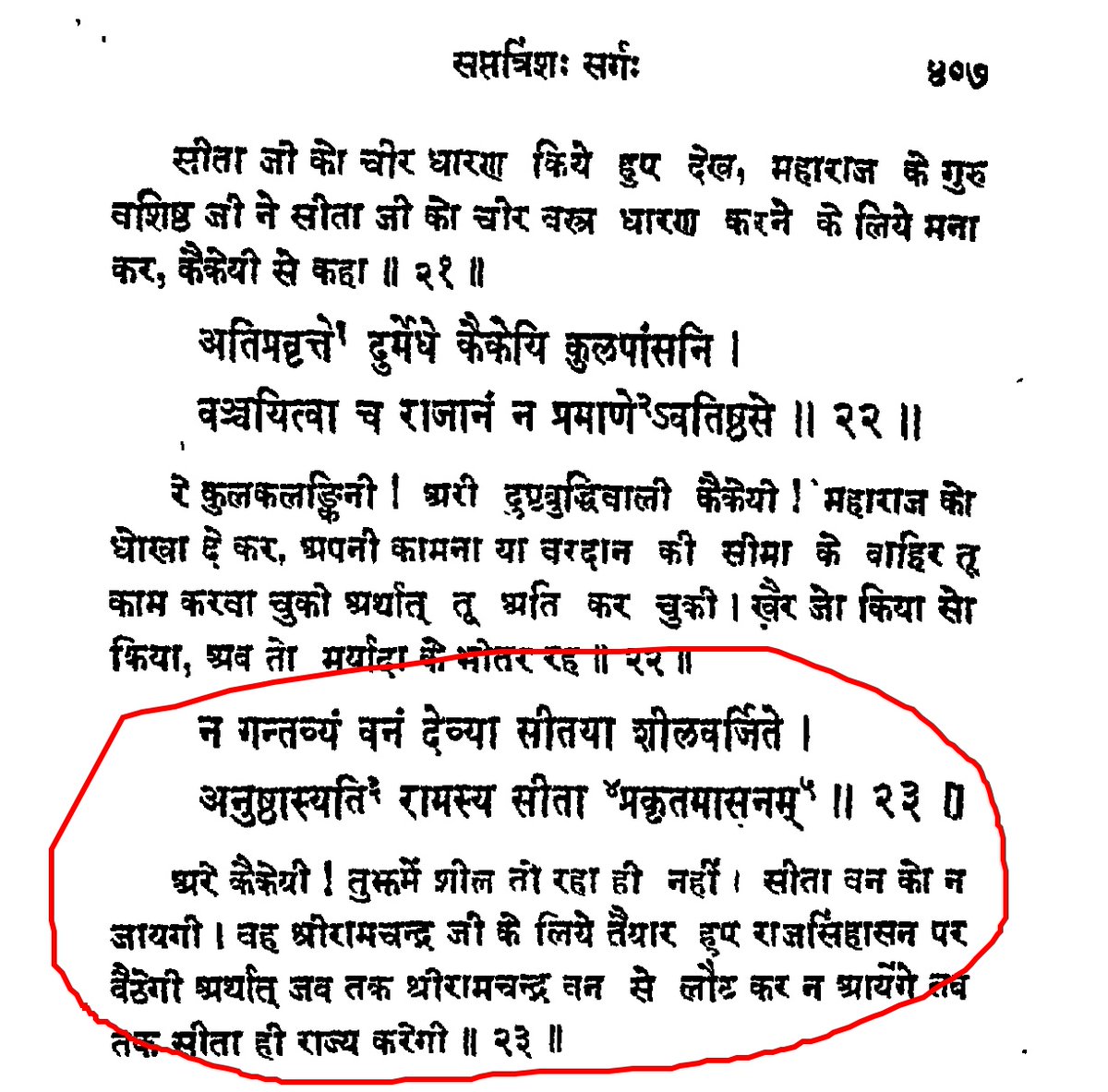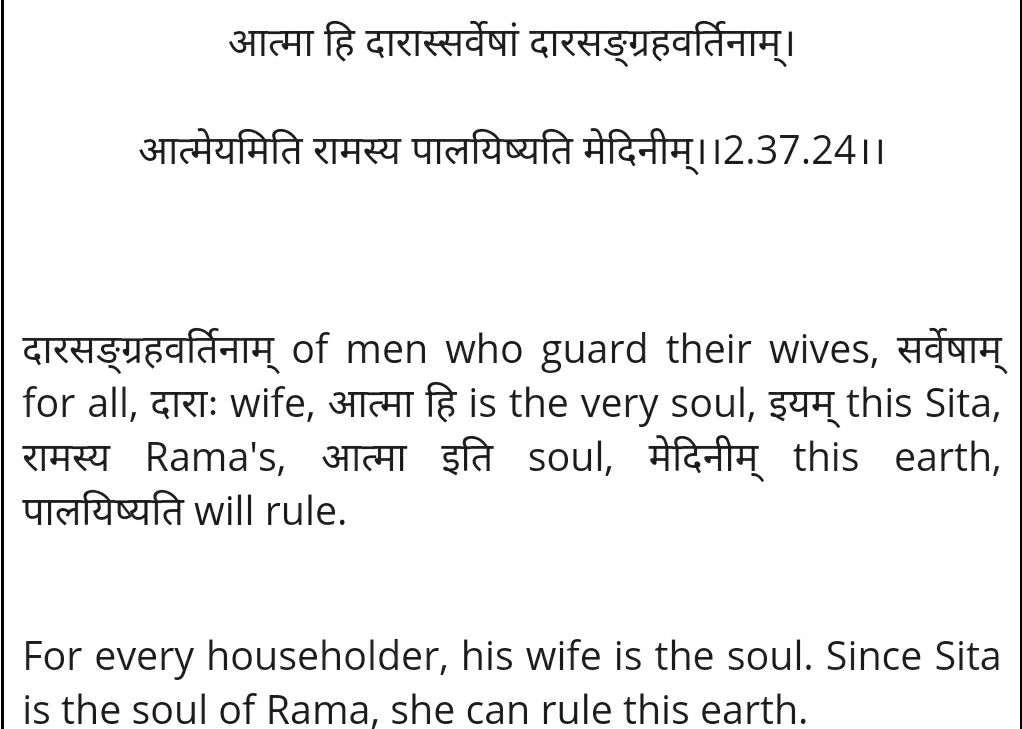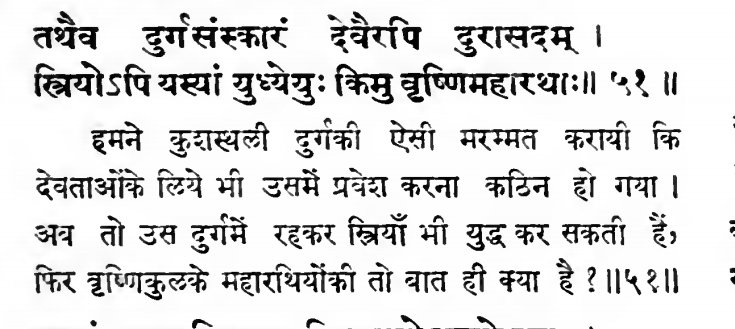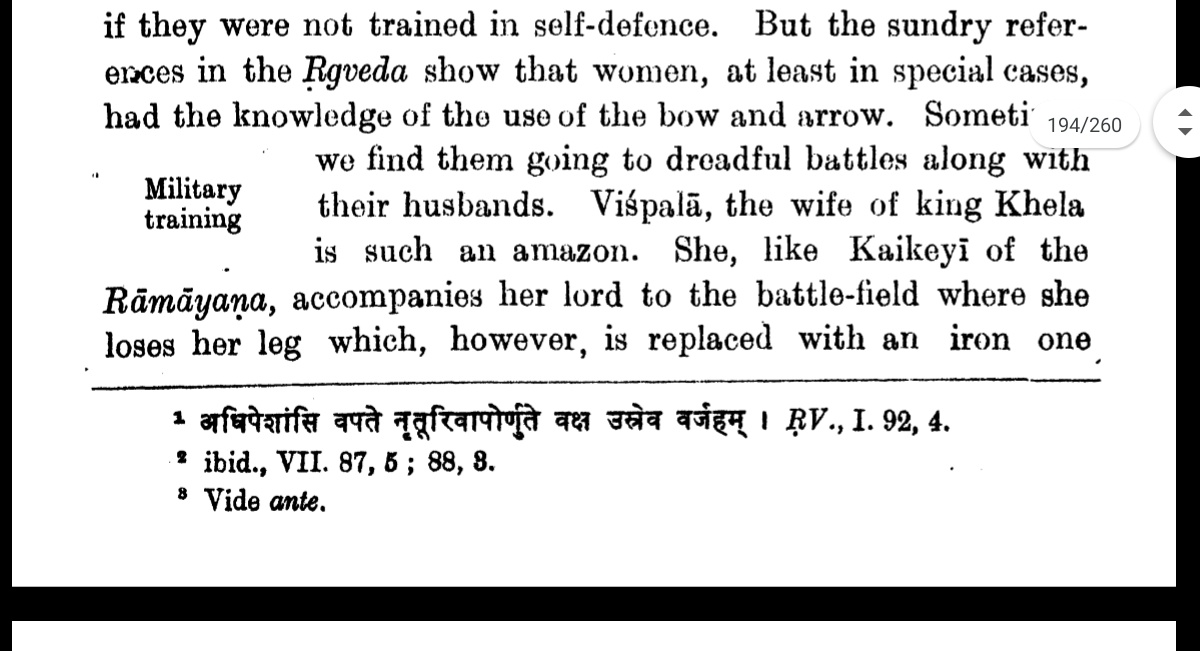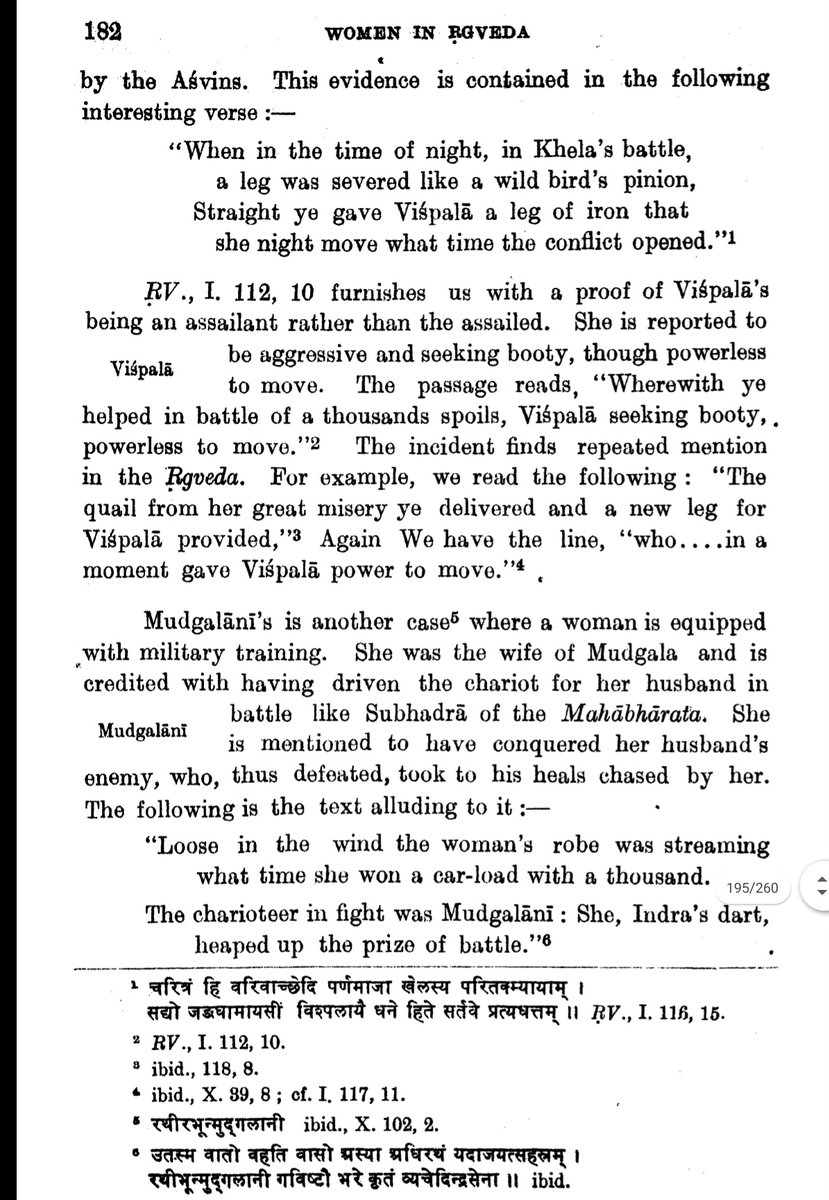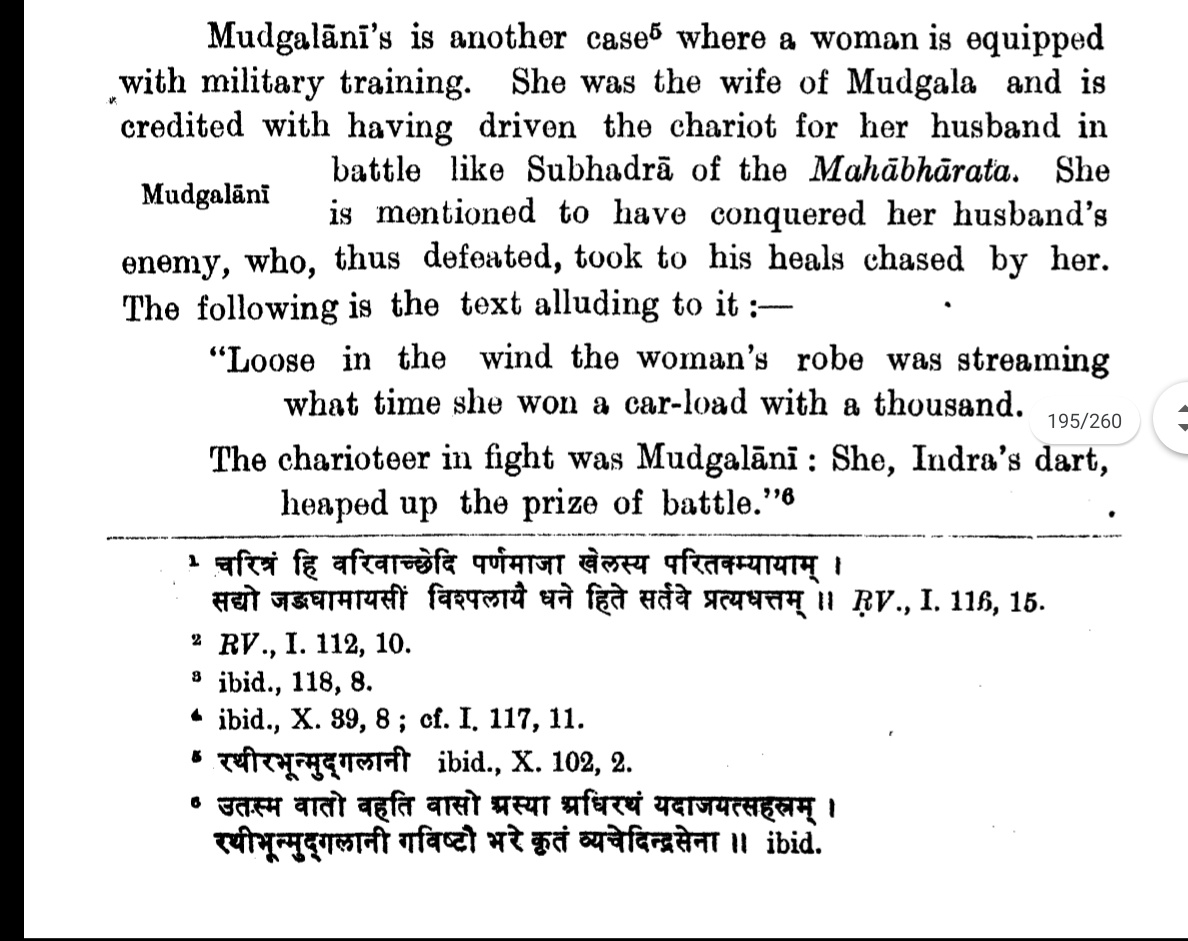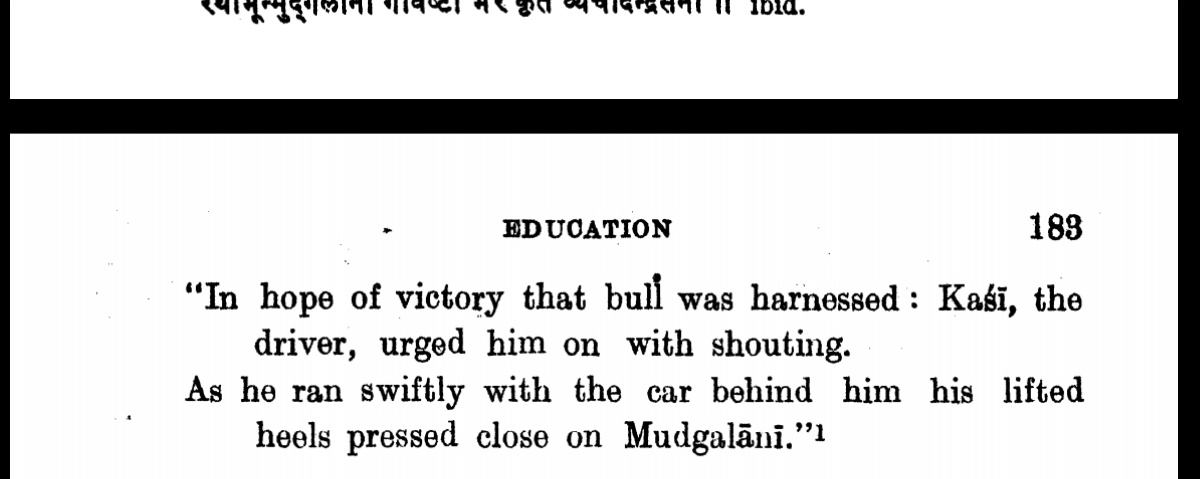In continuation of yesterday's thread regarding military and administrative training given to women in their formative years. Yesterday we explored, very briefly, how historically women were trained. Today, let's look at the scriptural references.
Just before Shri Ram set out for Vanwaas, Rishi Vashishtha, after condemning Kaikeyi, declares that Mata Sita will not accompany Shri Ram to the forest. Instead, she will sit on the throne prepared for him and will rule in his stead.
In the very next verse he justifies this by saying that, his wife is the soul of every householder. Since Mata Sita is Shri Ram's soul, she can rule this earth.
Atharva Veda 11.5.17 mentions that a King becomes capable of ruling after getting trained under a Guru and following Brahmacharya.
ब्रह्मचर्येण तपसा राजा राष्ट्रं वि रक्षति
ब्रह्मचर्येण तपसा राजा राष्ट्रं वि रक्षति
The very fact that Rishi Vashishtha considered Mata Sita to be a capable ruler who could rule in Shri Ram's absence suggests that she fulfilled the required conditions to sit on the throne.
We also see, Kaikeyi accompanying Maharaj Dasharath to war and saving his life in Ramayana. Again this feat would be impossible if she was not just trained in weapon welding but also an expert in the same.
Shri Krishna, when conversing with Yudhishthira about shifting of the Yadava capital from Mathura to Dwarka mentions that the forts has been enforced in such a way that even the women can defend it from within.
This casual reference to women defending the fort is an indicator that the Yadav women were well trained in defence tactics and it was not a very unusual thing to say. Women defending their lands in emergencies was not unheard of.
Vana Parva mentions that Dwarka had various weapons mounted on its walls for its defence. Women were sufficiently trained to use these weapons in case of an emergency.
Rigveda mentions many female warriors who went to fight dreadful battles with their husbands. Vispala, the wife of King Khela is said to have accompanied her husband to the battlefield where she lost a leg in the conflict and was given an iron leg by the Ashvins.
The verses mention her as the assailant, aggressive in her attitude despite being injured and thus unable to move.
Another example is that of Mudgalani, the wife of Mudgala. She is said to have driven the chariot for her husband in the battlefield. It is mentioned that she not only conquered her husband's enemy but also, chased the defeated enemy.
One point to be noted here is that, the book Women in Rigveda was written at a time when Aryan Invasion Theory was not just widely propogated but also accepted. So, the author makes repeated reference to the same.
AIT since then has been refuted completely and Rigveda is now accepted as the oldest Hindus text in existence.
The Aryans mentioned in the text are the sons of the soil and not some foreign invaders.
The Aryans mentioned in the text are the sons of the soil and not some foreign invaders.
Traditionally, women were given military training. Not only that, they even fought battles in case of an emergency. Even under normal conditions they were well equipped to protect themselves and were not entirely dependent on males of the family to protect them.
Despite their ability to protect themselves, the men of the family have been ordered to protect the female folks. This is not because the women were incapable of doing it but because it was considered as the duty of the men of the family to protect its women.
@gyanmparambalam thank you so much for the Ramayana SS
@Dharmicgoks thank you for the assistance that you gave innthe last few days.
Source: Women in Rigved by Bhagwat Saran Upadhyay.
@Dharmicgoks thank you for the assistance that you gave innthe last few days.
Source: Women in Rigved by Bhagwat Saran Upadhyay.

 Read on Twitter
Read on Twitter